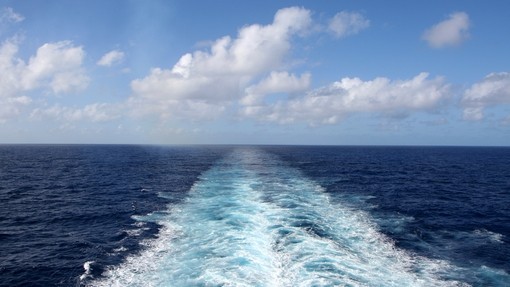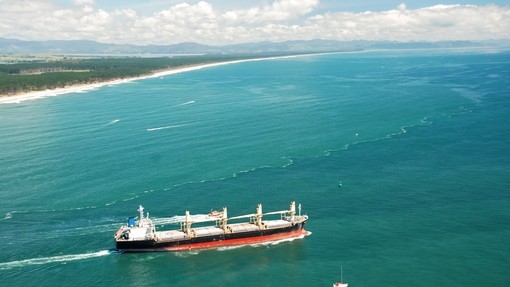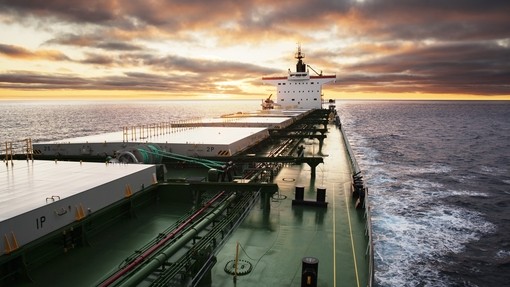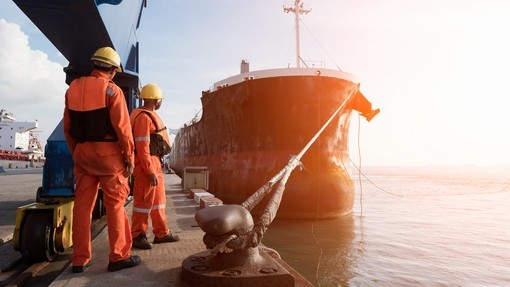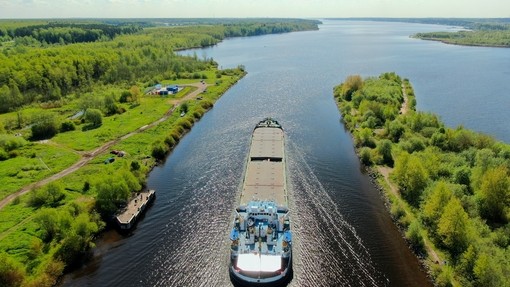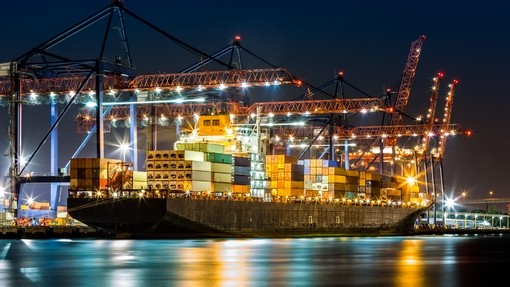Admiralty Court apportions liability for collision
Denver Maritime -v- Belpareil AS [2024] EWHC 362 (Admty)
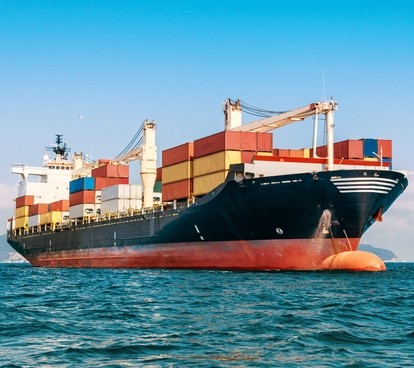
Admiralty Court apportions liability for collision
In the first reported Admiralty Court decision for 2024, liability for a collision between two vessels in the Bay of Bengal has been apportioned 70/30. Rather unusually for collisions that come before the Court, in this instance both vessels had been lying to anchor prior to, and had anchors deployed at, the time of collision.
The background facts
Both vessels were geared Supramax bulk carriers which had been lying to anchor off Chattogram, Bangladesh, and engaged in the discharge of cargo to barges.
The claimant’s vessel, Kiran Australia (KA), arrived at the anchorage on 1 November 2021. The defendant’s vessel, Belpareil (BP), arrived on 7 November 2021 and anchored about 0.5 nm distant from KA. Immediately prior to the collision, both vessels were discharging cargo into barges moored alongside.
On the evening of 8 November 2021, KA was lying to her starboard anchor with eight shackles in the water while BP lay to her port anchor with nine shackles in the water. Both vessels were displaying the requisite navigation lights and also had their decks illuminated.
At about 2300, the crew on BP became aware that their vessel was dragging her anchor. They responded by operating her main engine ahead, ordering various speeds, however due to technical failures, the main engine speed never exceeded 50-55RPM.
For over an hour, with BP continuing to drag, KA made unsuccessful attempts to raise BP by very high frequency radio (‘VHF’) between about 0010 and 0012 on 9 November. BP called KA by VHF at 0015 and acknowledged that BP was, in fact, dragging her anchor. At about 0019, the vessels corresponded again by VHF, whereby BP informed KA that her engine was “out of order”, to which KA advised BP that crew had been instructed to heave the vessel’s anchor. BP advised KA to “drag your vessel to the stern”, in response to which KA undertook to “try my best.”
BP also made attempts to contact Chattogram Port Control by VHF to obtain tug assistance, but several attempts to raise them were unsuccessful. BP broadcast Securite messages to alert other vessels in the vicinity of her dragging and made several more unsuccessful attempts to contact port control, seeking tug assistance. KA also failed to raise port control, when they hailed by VHF.
There followed what the Admiralty Court described as a “slow motion maritime tangle of collision avoidance”.
At 0037 (C-33), with both vessels almost parallel and only 30-50 metres apart the vessels manoeuvred to keep clear of each other, with BP advising KA that they “got the engine” at 0039. From 0042, BP began to move away from KA, while the latter vessel drifted astern with the tide, both vessels still having their anchors deployed.
At about 0053 (C-18), BP started to drift towards KA, informing her that “my engine is back to abnormal condition, so I suggest you please move your anchor position as backwards”. KA acknowledged this message and when BP again requested KA to heave her anchor, at C-16, KA responded, saying “Okay I start to heave up, I start to heave up.”
Port control finally responded to BP at C-8, but were unable to provide tug assistance, instead suggesting that BP call her agent for tugs and that BP drop her second anchor. BP declined to deploy a second anchor, citing a fear that the chains would become entangled.
The vessels collided at 0110, BP’s port bow making contact with KA’s starboard quarter.
The Admiralty Court decision
Allegations of fault
KA alleged (in closing arguments) the following causative fault on the part of BP:
- BP dragged anchor which was said to be prima facie evidence of negligence
- BP failed to notify other vessels of her predicament
- BP failed to call for tug assistance in good time; and
- BP failed to deploy her second (starboard) anchor prior to 0005 (KA accepting that this was the latest time at which the starboard anchor could have been used effectively to avert the collision)
Both vessels alleged that manoeuvres by the other brought the vessels into contact.
Relying on previous authorities - The Exeter City and Sea Serpent (1922) 12 Ll. L. Rep. 423 and The Brabant (1938) 60 Ll. L. Rep 323 – the Court agreed that a ship dragging her anchor was prima facie evidence of negligence. Albeit BP had not pleaded that the dragging of her anchor occurred without fault on her part, the Court noted that, if it were pleaded, BP would have been unable to show that the dragging of her anchor was not in fact due to negligence or prove that the dragging could not have been prevented by the exercise of reasonable skill and care.
Having reviewed BP’s actions while dragging, the Court found fault in her failure to take prompt and effective steps to seek tug assistance and warn other vessels. Despite being aware of the severity of the situation by 0007, the Master of BP did not notify KA that they were dragging anchor until 0015, or that the problem was exacerbated by the main engine problems until 0019. By this time, with eight shackles in the water and requiring approximately 20 minutes to recover her anchor, it was understandable, in the Court’s view, that the Master did not follow his first instinct to heave anchor at this time.
The Court stated that the Master of BP should have warned KA of the situation by 2340 and agreed with the Nautical Assessors that the Master of KA would likely have heaved anchor to steam away from the out of control BP, had they been made aware of the full extent of the incident at that time.
The Nautical Assessors levied a degree of criticism towards the Master of KA for not picking up the vessel’s anchor earlier and steaming away from BP. However, as BP had alleged no fault against KA prior to C-3, at the outset of the trial, nor did their Counsel appear to pursue any line of questioning relevant to events prior to C-3 in any detail, the Court did not consider this criticism relevant in reaching his decision.
Despite the fact that no tugs materialised or apparently were available, the Court found fault in BP’s failure to call for tug assistance earlier, which the Court suggested should have been at 2340.
Turning to the decision by BP not to deploy a second anchor, the Court was critical of contemporaneous documents generated in an apparent attempt to demonstrate that the use of the starboard anchor was considered but decided against due to the oscillation of the vessel’s heading. The Court also dismissed supposed records of the lead and stay of the port anchor as proof that the starboard anchor could not be deployed.
In both the Nautical Assessors’ and the Court’s view, the starboard anchor should have been dropped before 0005.
Both vessels were criticised for their manoeuvres prior to the collisions. The Court, however, disagreed with the contention of the Nautical Assessors that KA should face no criticism for deciding not to take way off and maintaining that decision, when it put the ships on a course for imminent collision. Instead, the Court found the actions of KA from (just prior to) C-3 to be taken without proper thought or calculated to avoid collision.
Whilst the Court decided that it was reasonable of BP to seek to shift to starboard between C-7 and C-3, it was satisfied that there was causative fault in her maintaining Full Ahead after C-2 and maintaining her course, in the knowledge that it was KA’s intention to continue astern.
Liability apportionment
The Court applied the principles set out in The Miaflores and The Abadesa [1967] 1 AC 826, effectively that the party that embarks on a deliberate act of negligence should bear the greater degree of fault, but the other party should bear fault based on their failure to cope adequately with the resulting crisis.
Asserting that it held BP more than twice but not three times as blameworthy as KA, the Court apportioned liability 70:30, against the former.
Note on witness evidence
Following the incident, the masters of both vessels generated their own narrative of events, each of which was contradicted by contemporaneous evidence, such as from the VDR. In its judgment, the Court noted this, as well as the fact that these narratives provided counsel with “gifts for cross-examination”. The Court voiced a small degree of empathy for the Masters, both of whom had experienced a casualty for the first time but gave short shrift to their written accounts of events.
The Court also criticised the formal witness statements adduced, particularly that of the Master of KA, which it described as “practically useless”. Both statements were prepared with the aid of the ‘MADAS’ replay, which, it was stated, was used to refresh the witnesses’ memory. The Court pointed out that, as ‘MADAS’ was not in use at the time of the collision, it was not an appropriate tool with which to refresh the memory of a witness, as VDR audio or radar screenshots might be.
Comment
The anchorages off Bangladesh are notorious for their congestion, poor holding ground, and unfavourable currents and weather conditions. Whilst collisions are common in this region, they rarely make it to court, as liability is often straightforward and quantum relatively low.
It has been held that a vessel should be considered underway when the anchor is broken out of the seabed (The Romance (1901)), or the vessel is no longer held or controlled by the anchor (The Palembang (1929) 34 LL Rep 147). BP was, therefore, underway from at least 2300 and KA later, once she started dredging her anchor. The scenario the vessels found themselves in does not, however, give rise to any described under Section II of the ‘Colregs’, but does arguably fall within the context of Rule 2. Interestingly, the Court did not address the question of whether vessels were underway, or apply the ‘Colregs’, instead assessing liability under the general principles of negligence.
Whilst both vessels found themselves in a precarious situation once BP started to drag, the widely known and publicised hazards associated with this part of the word should have been sufficient to prompt BP to take even greater care with respect to her anchoring. It is clear on the facts that the situation on BP was ominous from a relatively early stage and the failure of the Master to notify other vessels earlier prevented KA in taking effective action, which would have increased the likelihood of avoiding a close-quarters situation.
This is a helpful judgment, providing guidance on what should be expected of both a master whose vessel is dragging her anchor and the master of a vessel upon which a dragging vessel is bearing down.
This case also highlights the importance of accuracy in documents generated following an incident. Whilst the production of documents following an incident should always be limited to those which are absolutely necessary, all information recorded should be accurate and truthful, so as to avoid ‘gifts’ to opposing counsel later. Where possible, witness evidence should be recorded by a legal professional, in accordance with the requirements under PD57AC of the Civil Procedure Rules.

